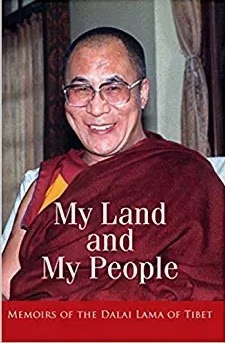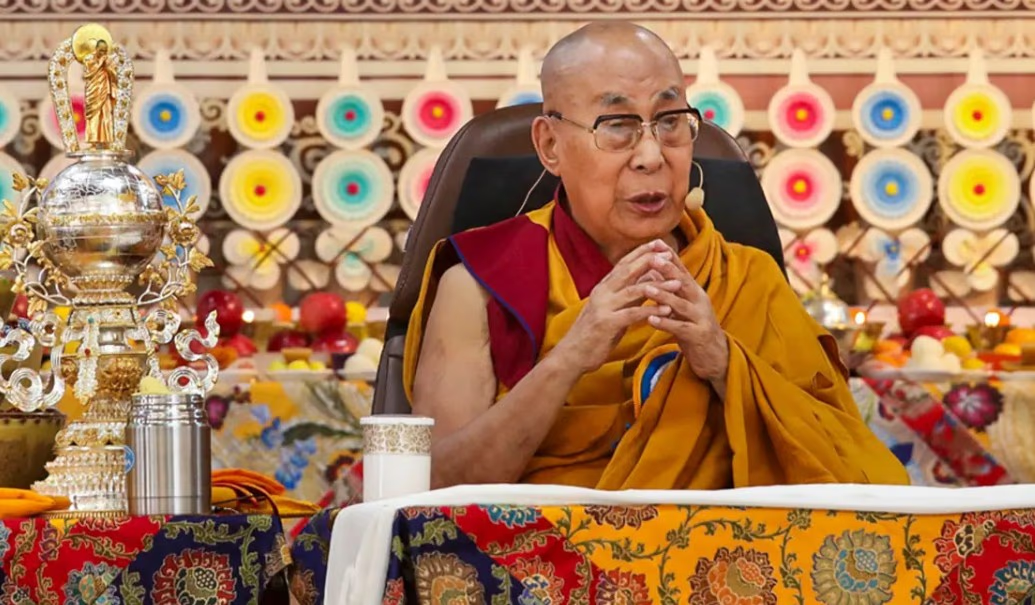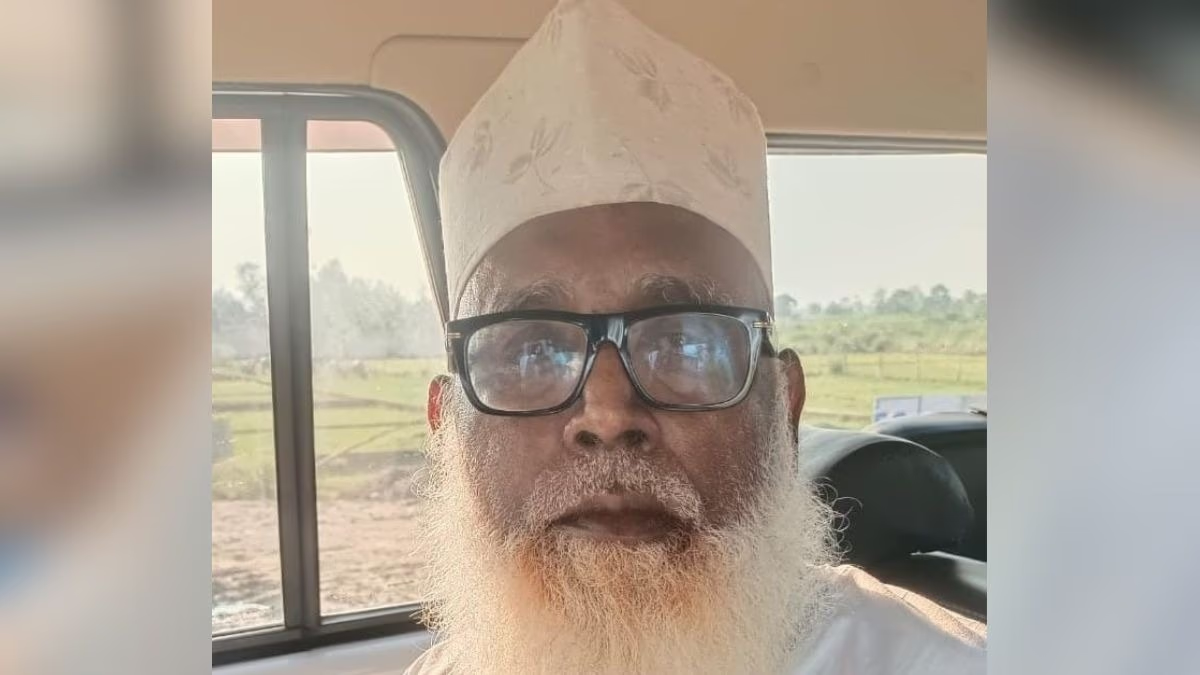The matter of the successor (reincarnation) of the Dalai Lama is a hot topic. Penpa Tsering, the head of the Tibetan government in exile, has strongly opposed China's attempts to interfere in the Dalai Lama's reincarnation process, stating that reincarnation is a spiritual process. How, then, can China decide where the next Dalai Lama will be born? Spiritual leaders determine where they should be reborn.
The New Dalai Lama is the Reincarnation of the Previous One
Discussions about the succession of the Dalai Lama have also sparked curiosity about how the supreme religious leader of Tibetan Buddhism is chosen. Every new Dalai Lama is the reincarnation of the previous one. The search for him considers numerous signs and symbols, and the announcement of the new Dalai Lama is made only after all possible aspects are evaluated to complete satisfaction.
It is believed that after death, the Dalai Lama is reincarnated in a new body. After his passing, senior monks search for a child who is believed to be the Dalai Lama's next incarnate. They scrutinize spiritual signs, analyze dreams, and observe images and omens. They carefully observe the posture of the Dalai Lama at the time of death, the direction of the corpse, and the movement of smoke during the cremation. Moreover, the sacred lake, Lhamo Latso, also plays a pivotal role in this journey. As fascinating as it is, this process is equally complex and sometimes appears unbelievable.
The Dalai Lama's Book Mentions the Entire Process
To understand how the search for the current Dalai Lama took place, it's essential to take note of it exhaustively. Living in Dharamshala, Himachal, the current Dalai Lama's discovery was equally intriguing, elaborated in his book 'My Land And My People: Memoirs Of The Dalai Lama Of Tibet'. He writes, 'I was born in 1935, in the fifth month of the Wood Hog year in the Tibetan calendar, in a small village called Taktser, located in the northeast of Tibet. Taktser is in the Dokham region. "Do" means the lower part of a valley that meets the plains, and "Khams" is the eastern part of Tibet where the Khampa Tibetan breed resides.'

Source: aajtak
Dalai Lama Comes from a Humble Family
Recalling his childhood and subsequent experiences, the Dalai Lama writes that 'Our family life was simple yet fulfilling, and much of that satisfaction is credited to Thubten Gyatso, the 13th Dalai Lama, who was Tibet’s spiritual and secular leader for many years and clarified Tibet’s status as an independent country.'
The 13th Lama Passed Away in 1933
In his book, he documents that in 1933 (the Tibetan Water Bird year), Thubten Gyatso passed away, casting a shadow of sorrow over Tibet. The news was brought to my village by my father, who heard it at a large monastery during a market visit to Kumbum. The 13th Dalai Lama had done much for Tibet's peace and well-being, so people decided to build a magnificent golden tomb as a tribute to his reverence.
...And Then the Search for the New Dalai Lama Began
According to ancient customs, this grand tomb was built within Lhasa's capital at the Potala Palace. With this came the most critical moment—the search for the new Dalai Lama. The current Dalai Lama further writes that 'Following the death of the 13th Dalai Lama, the quest for his reincarnation commenced immediately, as every Dalai Lama is the reincarnation of his predecessor. The first Dalai Lama, born in 1391 AD, was regarded as the manifestation of Chenrezig, the Buddha of Compassion, taking a vow to protect all sentient beings.'
What Processes Were Undertaken?
Detailing every aspect of the process for finding the new Dalai Lama, he expands on it extensively. 'Initially, the Tibetan National Assembly appointed a regent to govern until the new reincarnation was found and matured. According to ancient customs and traditions, consultations were made with astrologers and learned lamas to determine the location of the next Dalai Lama’s birth.'
Unusual Clouds and Fungus Signs Detected
At the commencement of identifying related signs, the first anomaly spotted was unusual cloud formations northeast of Lhasa. He writes that 'After the 13th Dalai Lama's death, his body was placed on a throne facing south at his summer residence in Lhasa, Norbulingka. However, a few days later, his face turned eastwards. A large, star-shaped fungus suddenly grew on a wooden pillar at the northeast corner of the temple where his body lay. All these signs indicated the direction where the new Dalai Lama should be found.' Consequently, in 1935, during the Tibetan Wood Boar year, the regent went to the sacred lake Lhamo Latso, about ninety miles southeast of Lhasa.

Source: aajtak
The Role of Lhamo Latso Lake
The Dalai Lama opines, 'Tibetans believe future glimpses can be seen in the waters of this lake. Tibet has several holy lakes, but Lhamo Latso is the most famous. Occasional visions appear in letters and sometimes as pictures of places and future events. After days of prayer and meditation, the regent envisioned three Tibetan letters—Ah, Ka, and Ma—and saw a monastery with green and golden roofs and a blue-tiled house.' In the first chapter of his book, the Dalai Lama notes that their home had blue tiles on the floor.
Based on Signs, Search Teams Were Dispatched
'A detailed account of these visions was inscribed and kept strictly confidential. The following year, highly ranked lamas and dignitaries were dispatched to all parts of Tibet to search for the place seen in the lake vision. Scholars traveling east entered our Dokham region during winter and spotted the green and golden roofs of Kumbum Monastery. In Taktser village, they immediately noticed a blue-tiled house. Their leader inquired if there was a child in the family residing there and was informed of a boy of about two years.'
The House Where the New Dalai Lama Was Born
The book 'My Land And My People' mentions that upon hearing this intriguing information, two team members, a servant, and two local monastery officials in disguise, entered the house. A junior monastery officer named Lobsang Tsondru, who presented himself as the leader while the actual leader, Sera Monastery's Lama Kewtsang Rinpoche, acted as a servant in plain attire.
The Start of Sign Discovery
The Dalai Lama narrates, 'At the door, my parents welcomed the strangers, mistaking Lobsang for the homeowner and inviting him in, while Lama and others were taken to the servants’ quarters. They saw the family’s small child there, and upon seeing the Lama, the child immediately went over to him, wanting to sit in his lap. The Lama wore a sheepskin-lined cloak with the 13th Dalai Lama's mala around his neck, which the child recognized and wanted.'
A Two-Year-Old Displays a Strong Attraction
The Lama promised the child the mala if he could say who they were, to which the boy responded, 'Sera Aga,' meaning 'Lama of Sera' in the local dialect. When asked who the 'master' was, the boy named Lobsang, also identifying the real servant Amdo Kasang by name. Throughout the day, the Lama observed the child with growing interest, remaining enchanted with his every move until he was put to bed.’ The 14th current Dalai Lama writes, ‘That child was me.'
Was Reincarnation Found?
The Dalai Lama recounts, 'Up to this point, my parents weren’t fully aware of the travelers' true mission, but a few days later, the full search team arrived with senior lamas at our home. That’s when my parents realized I might be a reincarnation, as Tibet is home to many reincarnate lamas, and my older brother already proved to be one among them. A reincarnate lama from Kumbum Monastery had recently died, and they thought the visitors might be searching for his reincarnation, though it hadn't occurred to them that I could be the reincarnation of the Dalai Lama.'
My words to the Lama hinted that they might have found the reincarnation they were seeking. The team brought with them two identical black malas—one belonging to the 13th Dalai Lama. When they offered me both, I chose the Dalai Lama’s mala and placed it around my neck. The Lama notes, 'I recount this based on what I was later told about my actions then.'

Source: aajtak
...But More Tests Were to Come
A similar test was conducted with two yellow malas. Subsequently, they presented two drums: a very small one used by the Dalai Lama for calling servants and a larger, elaborate drum with golden bands. I chose the small drum and started playing it the way prayers are accompanied by drums. Finally, they offered two sticks. I touched the wrong stick, paused, carefully examined it, and then took the second stick, which belonged to the Dalai Lama, holding it in my hand.
Signs That Were Later Searched and Matched with Facts
Later, the search team was surprised by my hesitation, but when they learned that the first stick had been used by the Dalai Lama as well, given to a Lama who passed it to Kewtsang Rinpoche, their astonishment was understandable. Through these tests, they became more convinced that the reincarnation was found, fortified by the three letters seen in the lake vision by the regent. They interpreted the first letter, “Ah,” as referring to Amdo, the name of our district. “Ka” could indicate Kumbum, one of the largest monasteries nearby seen in the regent’s vision or perhaps the two letters 'Ka' and 'Ma' referred to Karma Rolpai Dorje Monastery located on the mountain above the village.
Even in Life, the 13th Dalai Lama Gave Some Signs
The significance of earlier events wasn’t lost on them, as a few years previously, when returning from China, the 13th Dalai Lama stayed at Karma Rolpai Dorje Monastery. There, his abode was welcomed by the monastery's reincarnation, and villagers—including my nine-year-old father—paid him homage. Mention has been made that the Dalai Lama once left a pair of shoes or tsocen at the monastery. After a gaze at my birthplace, he remarked on it being a lovely location. From each of these facts, the search team concluded with certainty that their quest for the reincarnation had successfully ended.' The Lama writes, believing this, the subsequent procedures started, leading to me being named the 14th Dalai Lama.




